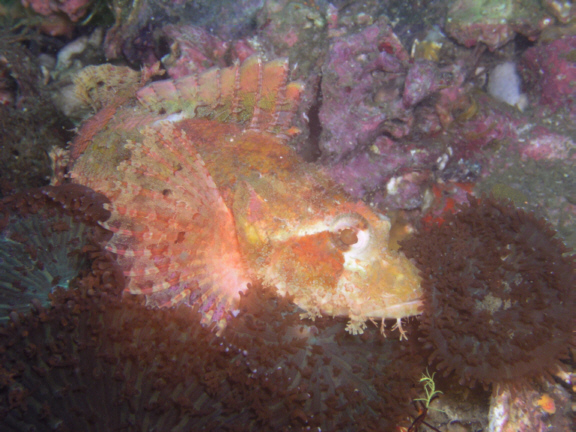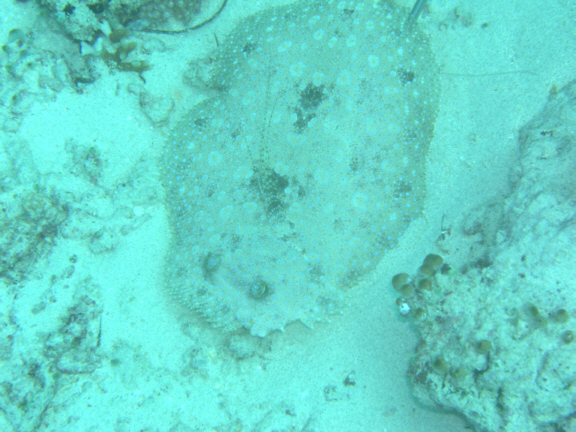

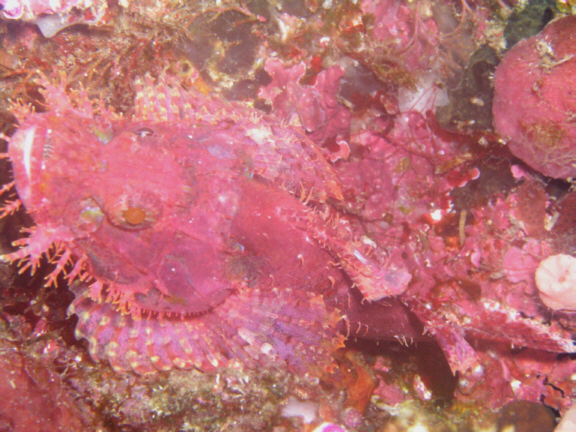
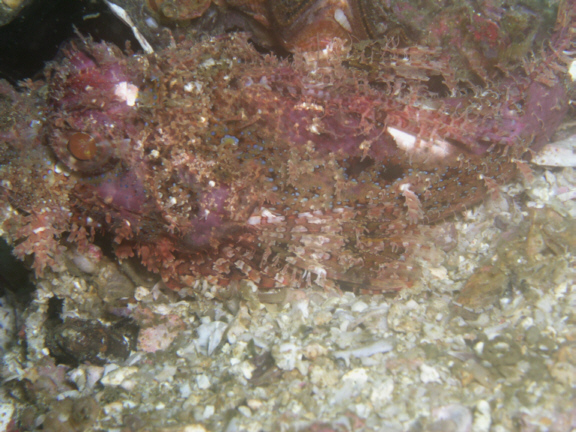
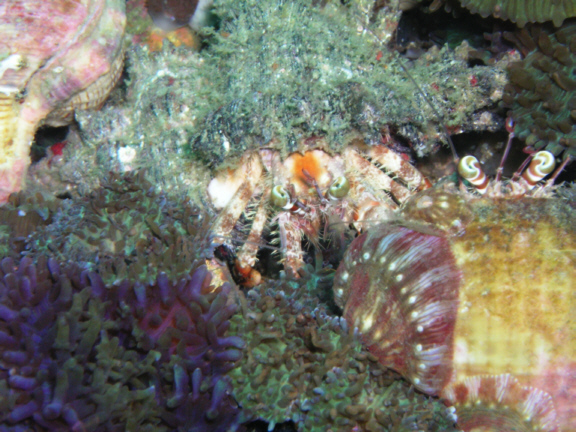
Flathead - Thysanophrys -
Krokodilsfisch. Interessant sind die gut getarnten Augen.
|

Sand Dab (Flatfish)
|
Devilfish Tasseled scorpionfish - Scorpaenopsis oxycephala - Fransen Drachenkopf http://www.starfish.ch/collecti on/scorpionfish.htm
|
Scorpionfishes and Lionfishes(Synanceinae) , Stonefish(Scorpaeninae),Stingfishes and Devilfishes (Choridactylinae) Characteristics Scorpionfishes have large, heavily ridged and spined heads. Venomous spines on their back and fins with a groove and venom sack. Well camouflaged with tassels, warts and colored specks. Some scorpionfishes can change their color to better match their surroundings. The stonefish is a master of disguise and deception, it looks like a piece of coral or sand covered rock. Thus he can blend in with its surroundings and go unnoticed by its prey. Ecology and range Most scorpion fishes live on or near the bottom. They lie in crevices, in caves and under overhangs. Range: Red Sea , pacific ocean to Australia, Hawaii. A few scorpionfishes (no lionfishes or stonefishes) live in the Caribbean. Behavior They feed on crustaceans, cephalopods
and fishes employing a lie-in-wait strategy, remaining stationary and snapping prey that comes near. With their mouth they create a vacuum and suck prey in during a nearly imperceptible split-second movement (15 milliseconds).
Some have algae and hydroid growth on their body surfaces( stonefish) and at least one species (Decoy scorpionfish Iracundus signifier) has a dorsal fin that looks like a swimming fish, a behavior similar to that of the frogfish.
Some species (for example the weed scorpionfish) sway their bodies from side to side so they look like a piece of debris. |
Scorpionfishes are not aggressive, but if threatened they will erect their dorsal spines. If danger continues they flee, usually very fast but only for a short
distance and then quickly settle back and freeze. The stonefishes for example ususally bury themselves in sand or rubble using a shoveling motion of their pectoral fins. In a matter of less than 10 seconds only the dorsal portion
of the head remains exposed, some sand is thrown on top to further enhancing concealment. Some species like the devilfish have very bright red and yellow colors on the inner surface of their pectoral fins. Those colors are not
visible when resting but are flashed if threatened. Scorpion fishes produce a floating, gelatinous mass in which the eggs are embedded. Die Familie der Skorpionfische enthält mehrere Subfamilien und Gattungen. Etwa 300 Arten gehören zu dieser Familie, unter anderem die bekannten Rotfeuerfische und Drachenköpfe. Merkmale Skorpionfische haben einen grossen Kopf mit Stacheln und Kerben. Die Rückenstacheln sind giftig und auch an den Flossen befinden sich giftige strahlenförmige Stacheln. Die Stacheln haben Giftdrüsen. Einige Skorpionfische können ihre Farbe der Umgebung anpassen. Vorkommen und Verbreitung Skorpionfische, Schaukelfische und Steinfische kommen im ganzen Riff vor, sind aber schlecht zu finden. Teufelsfische leben auf Sand und Geröll.Biologie Zeigt bei Gefahr plakative Warnfarben (Innenseite der Brustflosse), haben aber relativ kurze Fluchtdistanz. Schlechte Schwimmer. Lauerräuber. Saugen die Beute durch blitzschnelles Aufreissen des Maules ein ( Saugfalle). Rotfeuerfische (Skorpionfische) jagen in Gruppen von bis zu zwölf Exemplaren. Sie treiben ihre Beute mit ihren extrem langen Flossenstrahlen in eine günstige Position, um sie dann blitzschnell einzusaugen. Paarungskämpfe, stossen Eier ins Freiwasser ab (Rotfeuerfische) oder legen Eier als gelatine-ähnlichen Eiballen ab (Steinfische). http://www.starfish.ch/Korallenriff/Skorpionfisch.html |
Devilfish Tasseled scorpionfish - Scorpaenopsis oxycephala - Fransen Drachenkopf http://www.starfish.ch/collecti on/scorpionfish.htm
|
Devilfish Tasseled scorpionfish - Scorpaenopsis oxycephala - Fransen Drachenkopf http://www.starfish.ch/collecti on/scorpionfish.htm
|
Devilfish Tasseled scorpionfish - Scorpaenopsis oxycephala - Fransen Drachenkopf http://www.starfish.ch/collecti on/scorpionfish.htm
|
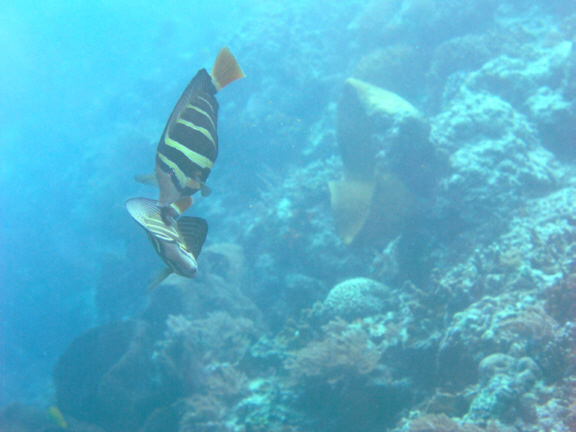

Always an impressive sight - the Napoleon wrasse can be over 2 meters. This one is a juvenile one, the hump on his head is not yet so prominent. Immer beeindruckend - der Napoleon Lippfisch, der über 2m gross wird. Dies ist
nur ein Jungtier, noch ohne den typischen Kopfwurlst |
Crocodilefish Cymbacephalus beauforti (Knapp, 1973) |
Napolean Wrasse
Malapascua Scorpion-, Lion-, Stone-, Sting-, Devilfishes |
Malapascua Island

Visayan Sea, Cebu, Philippines,
